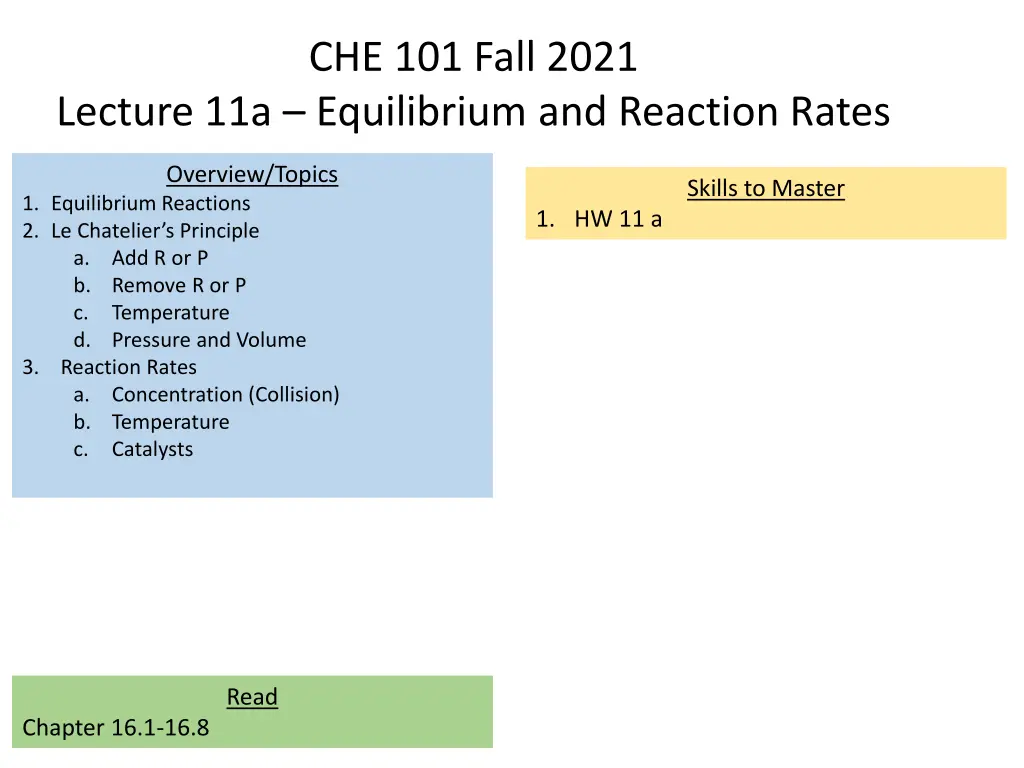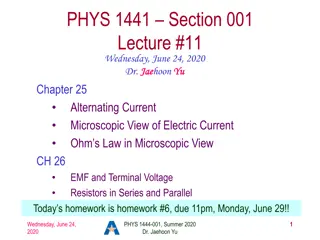
Equilibrium and Reaction Rates Overview: Mastering Key Concepts
Explore the principles of equilibrium reactions, Le Chatelier's Principle, and reaction rates in this comprehensive overview. Understand how to manage stresses in chemical systems to restore equilibrium and enhance your mastery of these fundamental concepts.
Download Presentation

Please find below an Image/Link to download the presentation.
The content on the website is provided AS IS for your information and personal use only. It may not be sold, licensed, or shared on other websites without obtaining consent from the author. If you encounter any issues during the download, it is possible that the publisher has removed the file from their server.
You are allowed to download the files provided on this website for personal or commercial use, subject to the condition that they are used lawfully. All files are the property of their respective owners.
The content on the website is provided AS IS for your information and personal use only. It may not be sold, licensed, or shared on other websites without obtaining consent from the author.
E N D
Presentation Transcript
CHE 101 Fall 2021 Lecture 11a Equilibrium and Reaction Rates Overview/Topics Skills to Master 1. Equilibrium Reactions 2. Le Chatelier s Principle a. Add R or P b. Remove R or P c. Temperature d. Pressure and Volume 3. Reaction Rates a. Concentration (Collision) b. Temperature c. Catalysts 1. HW 11 a Read Chapter 16.1-16.8
Part I Equilibrium and Le Chatelier s Principle
Reversible Reactions Reactions that go to completion Reactions that are reversible A + B C + D A + B C + D 0% 100% 25% 75% 60% 40% Other Reaction arrows
Dynamic Equilibrium Reactants Products Reactants Products Rate of Forward Reaction Rate of Reverse Reaction = Amount of Reactants Amount of Reactants A + B C + D 25% 75% 60% 40%
Le Chateliers Principle If a stress is applied to a system in equilibrium, the system will respond in such a way to relieve the stress and restore equilibrium under a new set of conditions Relieve means: 2 or 4 Stress s ? 1. Add more R/P 2. Remove R/P 3. Temperature (Energy) 4. Pressure/Volume System shift the reaction to undo the stress *never fully removes stress New set of conditions: The relative amounts of R and P is altered *never returns to original conditions
Example: A + B C + D Stress Applied Direction Reaction Shifts [A] [B] [C] [D] Add A
A + B C + D Original Equilibrium 2 A s 2 B s 2 C s 2 D s New/Different Equilibrium 5 A s = 3 C s 1 B = 3 D s Stress = Add 4 more A to the beaker Release Shift to Remove A
Math! A + B C + D Original Equilibrium 75 150 150 75 2:1 Stress = Add more A to the beaker +300 Release -50 -50 +50 +50 Shift to Remove A 2:1 New Equilibrium 400 100 125 125 I D I I Final Change
See Saw Method A + B C + D Original Equilibrium Stress = Add more A to the beaker Release Shift to Remove A New Equilibrium Final Change
Example: A + B C + D Stress Applied Direction Reaction Shifts [A] [B] [C] [D] Add A Example: A + B C + D Stress Applied Direction Reaction Shifts [A] [B] [C] [D] Add D
Remove Reactant or Product Same principle as adding (ie nothing new) Example: HCl (aq) + NaOH (aq) NaCl (aq) + H2O (l) Stress Applied Direction Reaction Shifts [HCl] [NaOH] [NaCl] [H2O] Remove NaCl Remove NaOH
Stress = Temperature Treat changes in temperature/energy just like a R or P (ie nothing new) Endothermic = Energy is added to a reaction (ie its on the R side) Exothermic = Energy is release in a reaction (ie its on the P side) HEAT + A + B C + D A + B C + D + HEAT
HCl (aq) + NaOH (aq) NaCl (aq) + H2O (l) + Heat Stress Applied Direction Reaction Shifts [HCl] [NaOH] [NaCl] [H2O] Increase Temp. Decrease Temp
Review Ch. 12! Changes in Pressure and Volume o Pressure and Volume are Inversely Proportional (IP) o Only applies to GASES Stress = Increase Volume Stress = Decrease Pressure Vol = 1 Liter [Gas] = 5 M Vol = 2 Liter [Gas] = 2.5 M Increase in Volume is like a Decrease in Concentration of Gas Decrease in Pressure is like a Decrease in Concentration of Gas Release = make more Gas
2 NO2(g) 1 N2O4(g) 2 mols Gas 1 mol Gas Example: Stress Applied Direction Reaction Shifts [NO2] [N2O4] Increase Vol. Decrease Vol.
3 A (g) + B 2 C (g) + 1 D (g) 3 mols Gas 3 mols Gas Example: Stress Applied Direction Reaction Shifts [A] [B] [C] [D] Increase Vol. Increase Pres.
Part II Increasing the Rate of Reactions
Review Ch. 4 Reaction Rates o Reactants must be in Proximity (ie. Collide) o Reactants must have enough Energy to react Draw an Energy Diagram for an Exothermic Reaction
A Prettier Picture TS Activation Energy (EA or EA) Energy Change in Reaction A + B C + D + Energy Exothermic Reaction
Increasing the Rate of a Reactions 1 More collisions = more reactions 1. Increase [R] and [P] 2. Increase the Temperature 3. Add a Catalyst 4. Nature of the reactants (s) vs (aq) 2 Increasing Temperature = More molecule have Energy to React (EA)
o Lower the Activation Energy (EA or EA) o New reaction mechanism o Increase the rate of a reaction o Have NO effect on Equilibrium Catalysts 3 Activation Energy (AE) (AE) Catalyzed Activation Energy (CAE) (CAE) Change in Energy
4 State of Reactants 1. Molecules must interact to react a. Similar to Surface Area (SA) or Particle Size (PS) for dissolving b. Solids = small surface area c. Aqueous = large surface area 2. Reactivity of Ions a. Solids = ionic bonds b. Aqueous = bonds already broken A+ C+ D- B- + (aq) = dissolved in water form individual ions B- A+ B- VS D- D- (s) = solids AB AB CD A+ C+ C+ AB CD CD






















